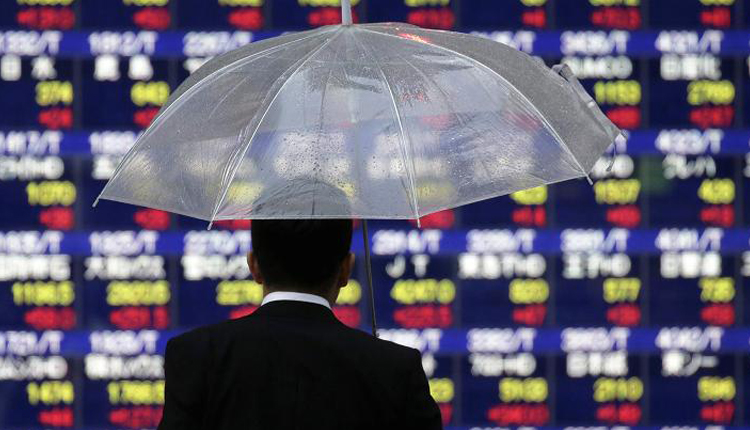Asian markets rose on Monday as U.S. Treasury yields bounced higher after plunging last week.
Shares in mainland China led gains in the region as they surged on the day, with the Shanghai composite adding 2.1 percent to 2,883.10 and the Shenzhen component gaining 2.96 percent to 9,328.97. The Shenzhen composite also advanced 3.048 percent to 1,571.97.
On Saturday, the People’s Bank of China said it will improve the mechanism used to establish the loan prime rate from this month, allowing it to “use market-based reform methods to help lower real lending rates. ” That comes as Beijing attempts to prop up a slowing economy that has been hit by its ongoing trade war with Washington.
Hong Kong’s Hang Seng index also jumped 2.4 percent, as life insurer AIA’s stock surged 3.22 percent.
Shares of airline Cathay Pacific rose 1.32 percent, following the resignation of its CEO last Friday “in view of recent events. ” The firm has come under political pressure from Beijing following the discovery that two of its pilots were involved in ongoing protests in Hong Kong that have rocked the city for weeks.
In Japan, the Nikkei 225 rose 0.71 percent to close at 20,563.16 as shares of convenience store operator FamilyMart surged 8.73 percent, while the Topix added 0.61 percent to finish its trading day at 1,494.33.
Meanwhile, South Korea’s Kospi advanced 0.66 percent to close at 1,939.90, while the S&P/ASX 200 in Australia gained 0.97 percent to end its trading day at 6,467.40.
Overall, the MSCI Asia ex-Japan index rose 1.24 percent.
US bond watch
Treasury yields rebounded last Friday, touching a high after reports that Germany would boost spending by issuing more debt.
The yield on the benchmark 10-year Treasury note was last at 1.5792 percent, while the rate on the 30-year Treasury bond was at 2.0641 percent.
“For now hopes of German fiscal stimulus is tied to the economic outlook. Nevertheless, hopes of fiscal stimulus will be important to watch with a broad-based global expansion of fiscal policy still being one way to scare a bond market with yields at extreme lows,” Tapas Strickland, an economist at National Australia Bank, wrote in a note.
The bond market flashed a signal last Wednesday that is normally interpreted as a sign a recession is on the horizon, as the yield on the 10-year Treasury note briefly broke below the rate for the 2-year.
The U.S. 30-year Treasury yield dropped to a record low last Thursday, while the yield on the benchmark 10-year notes dipped to a three-year low, as investors sought out safe-haven assets.
“Our expectation is really that despite the yield curve inversion, 2019 and most likely 2020 are actually going to be safe from a U.S. recession,” Stefan Hofer, managing director and chief investment strategist at LGT Bank Asia, told CNBC’s “Capital Connection” on Monday.
“I would not be too surprised at all to see the United States unveil a mini fiscal stimulus next year just to sort of keep us above water and sort of have that next U.S. recession happen in 2021 or a little bit later,” Hofer said.
Currencies and oil
The U.S. dollar index, which tracks the greenback against a basket of its peers, was at 98.16 after rising from levels below 97.5 last week.
The Japanese yen traded at 106.37 against the dollar following volatile movements in the previous week that saw it touching highs below 105.5. The Australian dollar changed hands at $0.6782 after seeing lows below $0.675 last week.
Oil prices rose in the morning of Asian trading hours. The international benchmark Brent crude futures contract added 1.53 percent to $59.54 per barrel, and U.S. crude futures gained 1.49 percent to $55.69 per barrel.
Source: CNBC
